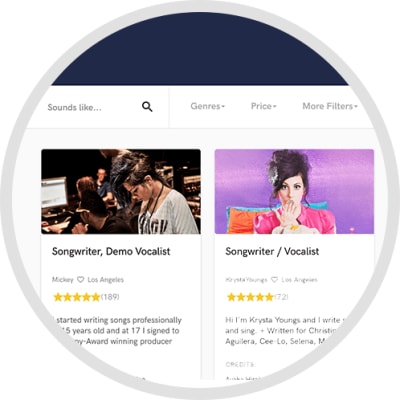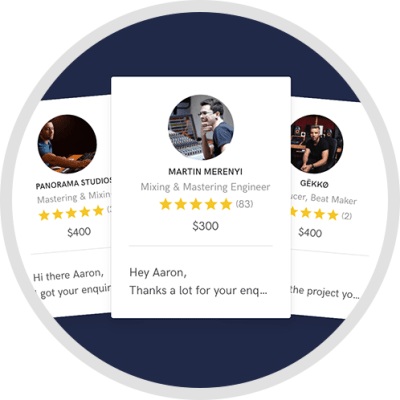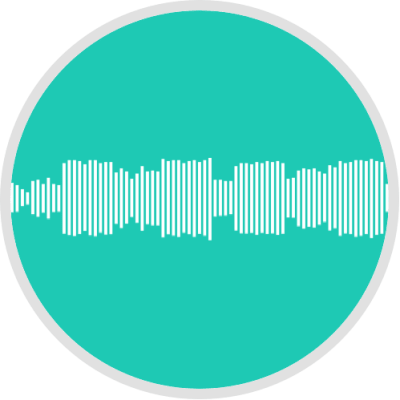
BA in Audio Recording and Production from SUNY Oswego, taught by Professor Daniel Wood. Specialty in the acoustic oddities; the weirder your music is, the more I'll love mixing it. 🏳️⚧️
Hi! My name is Juno, and I'm a recent graduate from SUNY Oswego's Audio (Recording and Production) program in New York. Before enrolling, music mixing was already a hobby of mine, and my education only amplified my interest, while teaching me the things I need to know to make my mixes truly professional-level.
While enrolled at Oswego, I recorded, mixed, and mastered two singles, three EPs, and an LP of my own and other's work in various genres (jazz fusion, progressive rock, pop-rock). I assisted in a professional live recording of the indie rock band Melon Heart, and later mixed and mastered that recording so that it was ready for a commercial release. I also learned plenty of people skills from operating as a "studio manager" of sorts while TA'ing for Daniel Wood's Recording classes. Rest assured, I'll find a way to get you what you need out of your project!
Programs I have experience with:
- AVID Pro Tools
- UAD Spark Bundle
- Reaper
- FL Studio
Gear I have experience with:
- API 1608
- AVID S6
- Behringer Powerplay P16
- Radial X-Amp Reamping Box
- Tascam Model 12
Contact me through the green button above and let's get to work.
Credits
Interview with Juno Lindsey Willow
Q: Analog or digital and why?
A: If it were cheaper and easier to acquire than it is, analog, easily. Even in my digital work, I'm always trying to find ways to incorporate a more analog sound. My favorite plugins for doing that so far have been the Verve Analog Machines and UAD Studer A800, though I'm always looking for more.
Q: What do you like most about your job?
A: I love that my job allows me to be constantly working on, and interfacing with, music.
Q: What was your career path? How long have you been doing this?
A: I was in college for Audio Recording and Production from 2021 to 2025, but I've been practicing mixing music and picking out the little details since I was in at least 10th grade. It was that experience that I believe caused me to stick out among my peers in my classes at college.
Q: How would you describe your style?
A: One could describe my style as vintage, warm, natural, or any other descriptors that you could apply to the music of the 1970s. That's the era that many of my influences reside, and because of my love for that music, I rarely end up programming music. Much of what I produce, mix, and master has that "alive" sound to it.
Q: Which artist would you like to work with and why?
A: If we're going through time, Todd Rundgren. So many ideas, so many interesting sounds to record, so many technical challenges to overcome. And I'd personally love to really take a deep dive into what individual instruments make his music tick.
Q: Can you share one music production tip?
A: Gate your toms! Or better yet, edit them manually. I was told about this trick by a colleague, but never realized its effectiveness until I tried it for myself, and now I'm doing it constantly. It frees up so much air in a mix, and is absolutely worth doing.
Q: What type of music do you usually work on?
A: My usual genres of music are singer/songwriter, progressive rock, and jazz fusion, though I've dabbled in electronic music before, and I'm open to learn any other styles!
Q: What's your typical work process?
A: I'll typically start a project by listening to a demo and drawing a chart with the dynamics I'd like to add to it. As we record the track, I like to keep an open mind for how the project shifts in sound, and what little additions it may need to pull it together. Meanwhile during this process, I'll be building a rough mix with the artist to get an idea of how it should generally sound, and what instruments should be more present. The mixing process beyond that is just a matter of compressing and EQ'ing each instrument or bus so that there's enough space for everything to sit nicely, and for the vocals to come through.
Q: Tell us about your studio setup.
A: My current setup is a Mac Mini running Pro Tools and Logic, a set of Beyerdynamic DT770 Pro's, a pair of Emotiva B2+'s, and a Tascam Model 12 mixer, as well as a number of digital effects from UAD and Waves. Not the most high-end setup, I'm aware, but I'm fresh out of college, whaddya want from me :P ?
Q: What other musicians or music production professionals inspire you?
A: Roy Thomas Baker's sound is unmistakable, and I hold his productions dear to me as something to strive to reach in my own work. His punchy, saturated, and wide sound suited all the artists he worked with, whether it was Queen or The Cars. I'm also a pretty big fan of Stephen Desper's sound, and his gall to try and push spatial audio into the mainstream back in the 1970s, in a way that would allow the average listener to enjoy.
Q: Describe the most common type of work you do for your clients.
A: So far, I've by far done the most mixing work. It's my favorite part of the process, and something I was practicing long before I even made it to college for audio engineering. Second is recording, which I've done quite a bit of between professional recording studios and my home studio, and next is mastering.

I was the Recording, Mixing, and Mastering Engineer in this production
- Mixing EngineerAverage price - $150 per song
- Mastering EngineerAverage price - $70 per song
- EditingAverage price - $50 per track
- Vocal compingAverage price - $40 per track
- Vocal TuningAverage price - $40 per track
- Return To Forever
- Jellyfish
- Wings
- Tascam Model 12
- Beyerdynamic DT770 Pros
- Apple Mac Mini



